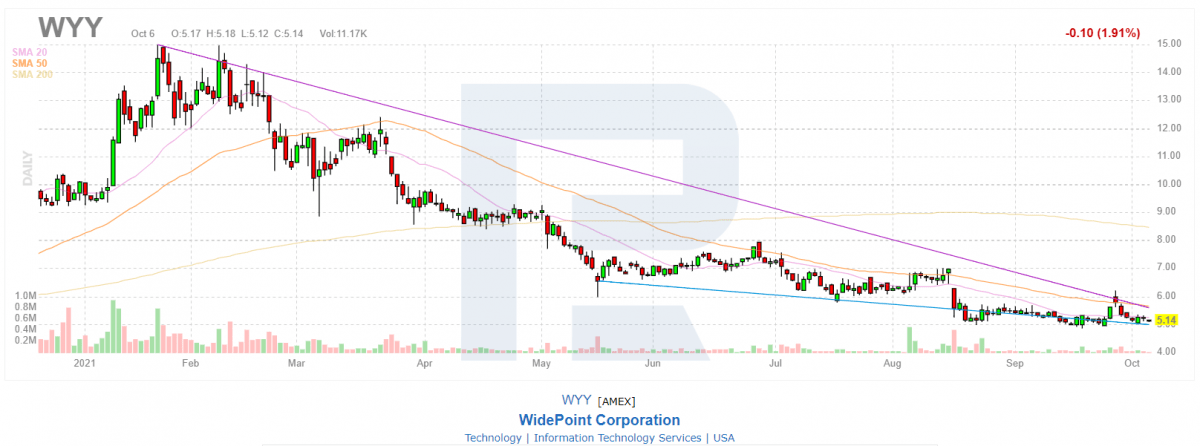
The Current Ratio multiplier (or Liquidity Ratio) shows a company’s or corporation’s ability to pay short-term obligations due within one year. The multiplier is calculated as Current assets/Current liabilities for a particular period of time.
Current Ratio is used by investors, companies’ top management and analysts for both assessing investment attraction of an organization and practical understanding whether a company can satisfy its current debts and other payables.
When a company’s activities result in fewer funds on its balance sheet than required for the performance of financial obligations to creditors or suppliers, then the current liquidity implies the impossibility of debt compliance.
If the situation is reversed and a company has more money on its balance sheet than necessary for paying all its debts and liabilities, its profit significantly decreases because a company keeps the money on its accounts instead of realizing what is earned. In a perfect world, the current liquidity of a company should be balanced.
Calculating the Current Ratio multiplier
Like all other multipliers, Current Ratio for public companies can be found on the Internet, so there is no need to calculate it manually. All you have to do is specify a required value in the stock screener and get the results.
An example from a popular resource finviz.com:

However, for illustrative purposes, let’s look at the Current Ratio calculation formula:
Current Ratio = Current assets / Current liabilities
- Current assets are the funds involved in a company’s operations and activities that are liquidated during the year (12 months). An increase in assets ratio contributes to a company’s capital turnover. A sudden increase in operating assets may be caused by ineffective activities of a company and lead to, for example, a surplus of products at stock. According to another term, Current assets are just short-term assets because of their quick usage.
- Current liabilities are a company’s total liabilities to be liquidated within 12 months using current assets only.
The result of this operation (Current assets / Current liabilities) is Current Ratio.
The Current Ratio values
Let’s discuss what values the Current Ratio multiplier can have.
- Current Ratio of less than 1 tells investors that a company has little capital to meet short-term liabilities.
- Current Ratio equal to 1 or higher means that a company is financially reliable in the short-term due to its accumulated funds.
The best value is from 1.6 to 2. However, these values of the Current Ratio multiplier neither mean that a company is financially reliable in the long-term nor provide a complete picture of its short-term liquidity. The reason lies in a constant change of the data, so the Current Ratio multiplier shows only the current situation of a company.
Practical applications of the Current Ratio multiplier
It’s quite simple to apply the Current Ratio multiplier in practice. All we have to do is to choose a company’s sector and enter the required values.

The multiplier value is chosen based on your preferences and interests. Based on everything that was said above, the best value for mid-term investments is from 1.5 to 2. After that, the filter will offer you several companies that may be considered for investing in.
In this case, you should remember that the Current Ratio multiplier is not a single criterion for choosing investment-attractive instruments. Considering all pros and contras, this ratio should be used in combination with other multipliers to get a complete picture of a company’s financial attraction.
Selection of stocks using Current Ratio
To select stocks using the Current Ratio multiplier, you need to do the following:
1. In a screener, choose a sector, for example, Technology. Leave the “Industry” field with “Any” – in this case, you will have more investment options to choose from.

At the time of this writing, a screener offered 729 stocks. Let’s add more multipliers to reduce the number of stocksб so that it would be easier to choose.
2. Set the Current Ratio value at “Over 1.5”. As we can see, the number of stocks dropped to 528.

3. Add the following multipliers as additional filters:

The above-mentioned values are just an example and may be changed by investors.
A screener showed that the best company with these parameters is WYY, Wide Point Corporation.
Tech analysis of Wide Point Corporation shares
Nowadays, the company is having a bad time and its shares plunged towards the support level at $5.14. Judging by historical data, we may assume that investors may pay attention to the company in the nearest future and it won’t be underestimated.
A relatively low share price allows a lot of market players to invest in Wide Point Corporation. There are growth prospects with the target at $8.00. At the same time, if the price breaks the low, we may try to get rid of Wide Point Corporation shares with minimum losses.

The choice of multipliers for filtering may vary depending on investors’ preferences and shouldn’t be the same for everyone. By trying different values and multipliers, you can find combinations that are most suitable for you.
Advantages and disadvantage of the Current Ratio multiplier
Among the advantages and disadvantages of Current Ratio, I would name the following:
Advantages:
- Easy to calculate – all numbers and readings can be taken from reports published by the companies themselves.
- A precise numerical value, which shows the real capabilities of companies at the moment and doesn’t misinform.
- It shows the short-term financial reliability of a company and its capability to settle liabilities within 12 months.
Disadvantages:
- The Current Ratio multiplier uses all available assets, including the ones that are hard to convert into money.
- It allows to compare companies only within the same sector.
- Don’t allow to calculate the dynamic of a company’s growth in the long run.
Closing thoughts
Just like many other multipliers, Current Ratio can be used to compare companies from the same sector and make up their financial statements based on general principles. For the best usage, Current Rati should be used with other multipliers.
Sometimes, when you specify some particular parameters of multipliers, a screener may not show any result. In this case, you should change values or use fewer parameters.
As a result of a comprehensive selection of stocks using the multiplier, the system will offer you a suitable variant for investments of mid-term trading.
Invest in American stocks with RoboForex on favorable terms! Real shares can be traded on the R StocksTrader platform from $ 0.0045 per share, with a minimum trading fee of $ 0.25. You can also try your trading skills in the R StocksTrader platform on a demo account, just register on RoboForex.com and open a trading account.
The post How to Use the Current Ratio Multiplier for Stock Analysis appeared first at R Blog – RoboForex.
